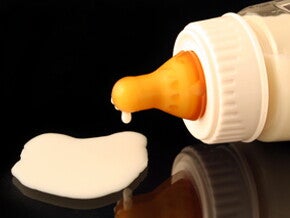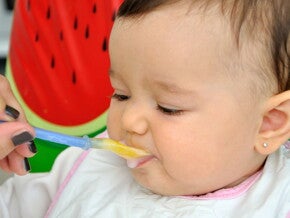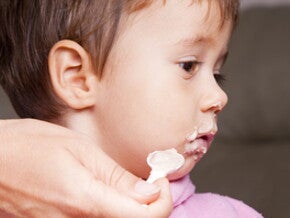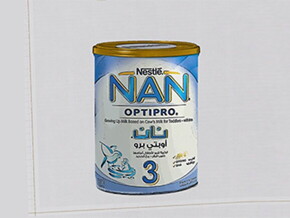
Probiotics: The friendly bacteria of the gut
Not everybody realizes that probiotics - the name literally means “for life” - are live bacteria that are known to provide specific health benefits.
Around 99% of bacteria found in the gut are actually harmless or carry out essential functions for health.1 Still, even as they represent such an overwhelming majority, these good bacteria sometimes need a little help to maintain the right balance and prevent harm from the remaining 1% pathogens.
Why does your child need probiotics?

Research has shown that the establishment of an optimal microbial community immediately after birth and the maintenance of a balanced gut microbiota are essential for the development of a child’s immune system2,3
However, a child’s highly complex gut microbiota balance can be influenced by several key factors such as genetic background, maternal diet, gestational age*, environment, mode of delivery, type of feeding and antibiotic use.2-6 The right type of probiotics can help.
*Number of months in the womb before birth.
What are the benefits of probiotics for children?
Besides supporting your child’s overall health, probiotics such as B. Lactis have been clinically shown to support their healthy defense system.7-9 And at a time where your child may need it the most.
2 ways probiotic B. Lactis supports your child’s immune system
The effects of B. Lactis on the child’s gut immune system have been researched extensively.10-13 Studies have shown an impact on 2 key levels of gut immune system mechanisms:

B. Lactis reduces the frequency and length of diarrheal episodes.10,12,13

B. Lactis increases the proportion of the friendly bifidobacteria in the gut microbiota.11
When selecting a formula for your child, you may consider a scientifically designed formula supplemented with probiotic B. Lactis.
IMPORTANT NOTICE: We believe that breastfeeding is the ideal nutritional start for babies and we fully support the World Health Organizations recommendation of exclusive breastfeeding for the first six months of life followed by the introduction of adequate nutritious complementary foods along with continued breastfeeding up to two years of age.
NAN® Supreme Pro 3 is not a breast-milk substitute. We recommend that you speak to your healthcare professional about how to feed your baby and seek advice on when to introduce this product.
References: 1. Vedantam G, et al.Curr Opin Microbiol. 2003 Oct;6(5):457-61. 2. Martin R, et al.Benef Microbes. 2010 Nov;1(4):367-82. 3. Milani C, et al.Microbiol Mol Biol Rev. 2017 Nov 8;81(4). pii: e00036-17. 4. Francino MP.Pathogens. 2014 Sep 24;3(3):769-90. 5. Chong CYL, et al.Nutrients. 2018 Feb 28;10(3). pii: E274. 6. Collado MC, et al.Pediatr Res. 2015 Jun;77(6):726-31. 7. Blum S, Schiffrin EJ. Curr Issues Intest Microbiol. 2003;4(2):53-60. 8. Walker WA. J Pediatr Gastroenterol Nutr. 2000;30(Suppl 2):S2-7. 9. Huang Y, Shao XM, Neu J. Eur J Pediatr. 2003;162:122-128. 10. Chouraqui JP, et al.J Pediatr Gastroenterol Nutr. 2004 ;38(3):288-92. 11. Holscher HD, et al. J Parenter Enteral Nutr. 2012 Jan;36(1 Suppl):106S-17S. 12. Weizman Z, et al. Pediatrics. 2005;115(1):5-9. 13. Ziegler EE, et al. Monatsschr Kinderheilkd [Suppl 1] 2003. 151:S65-S71.




















